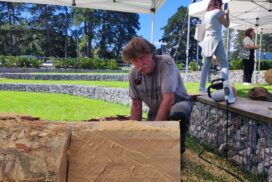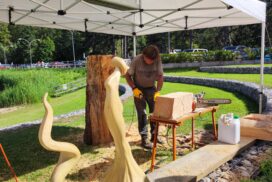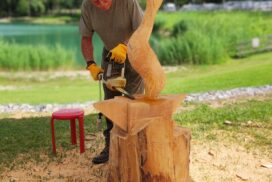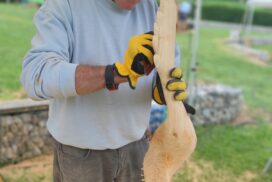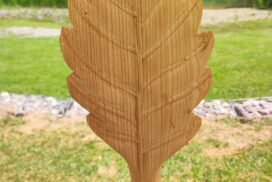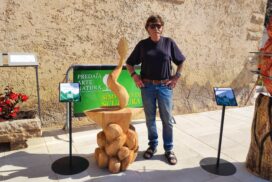Paolo Domenichini

Country of origni: ITALY
Lives in: Albinea (RE – Italy)
We know the Artist:
He was born in 1950 in Reggio Emilia, he graduated in Architecture at the Faculty of Studies in Florence.
He carries out his profession of wood sculptor full time with passion.
He has participated in many solo and group exhibitions, including:
- personal exhibition in the cloisters of San Domenico in Reggio Emilia
- collective exhibition LIGNE ET COULEUR at the Orangerie des jardins du Luxembourg – Paris
- International art exhibition of the Architects and Artists in S.Giovanni Evangelista – Venice
- Twelfth International Contemporary Art Collective at Palazzo Fantuzzi – Bologna May 2016
- From 02/24/2017 exhibition of sculptures in the FLAYER ART GALLERY – Rome
- From 09/02/2017 sculpture exhibition at the INTERNATIONAL MEDITERRANEAN ART BIENNALE – Palermo
- BARCELONA ART BIENNALE – May 2017-08-01
- Seventeenth International Contemporary Art Collective at Palazzo Fantuzzi – Bologna – April 2017
- Eighteenth Group Exhibition of International Contemporary Art at Palazzo Fantuzzi – Bologna – June 2017 – First prize for sculpture
- INTERNATIONAL SYMPOSIUM OF WOOD SCULPTURE – LIGHTS AND SHADOWS OF WOOD – Castello Tesino – July 2017
- INTERNATIONAL WOOD SCULPTURE SYMPOSIUM – OSSANA (TN)
- Castle of San Michele 21-26 August 2017 (Third place)
- BERLIN INTERNATIONAL AWARD – Painting, sculpture, graphics and photography September 2017
- Personal exhibition of sculptures in Galleria Farini in Bologna from 22 to 31 March 2018
- Exhibition of 3 sculptures at ARTEXPO in New York City from April 19 to 22, 2018
- COLV ART SCULPTURE SYMPOSIUM – S.MARTINO DI CASTROZZA – from 27 June to 02 July 2022
Proposal for the Predaia Symposium 2023:
The sculpture created by Paolo has the title “dalle pietre al bosco”.
The reading of the work proposed by Paolo starts from the bottom, from the earth, from the stones from which the minerals are extracted with which Hephaestus forged weapons and jewels.
On those stones rests an anvil, the main instrument of Hephaestus’ work.
From the anvil comes a melody of sounds that blends with that of the flute of the god Pan, in an ideal symbiosis between earth and nature.
